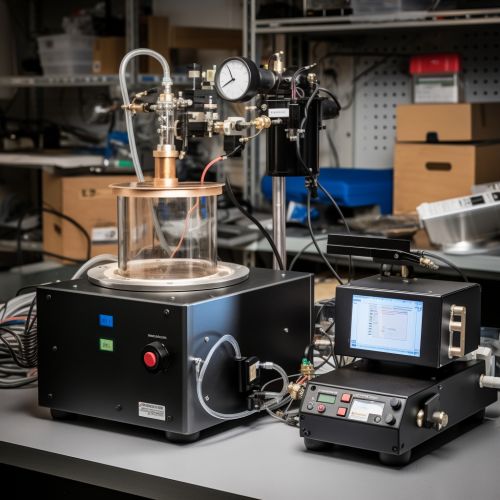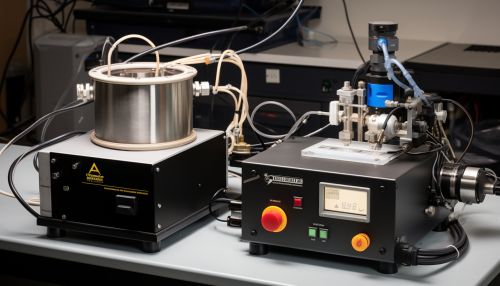Resistive Evaporation
Introduction
Resistive evaporation is a method used in the deposition of thin films of material onto a substrate. This process involves the heating of a source material in a vacuum environment to the point of evaporation. The evaporated atoms then travel across the vacuum to the substrate, where they condense, forming a thin film. Resistive evaporation is a common method used in the fabrication of semiconductor devices, optical coatings, and other applications requiring thin films of material.
Principle of Operation
The principle of operation of resistive evaporation involves the application of an electric current to a source material. The current causes resistive heating of the material, raising its temperature to the point of evaporation. The evaporated atoms then travel across the vacuum chamber and condense on the substrate, forming a thin film. The process is typically conducted in a high vacuum environment to minimize the presence of gas molecules that could interfere with the deposition process.
Equipment and Setup
The equipment used in resistive evaporation typically includes a vacuum chamber, a source material holder, a power supply, and a substrate holder. The source material holder is often a tungsten boat or filament, which is heated by the electric current to evaporate the source material. The power supply provides the electric current for resistive heating. The substrate holder positions the substrate within the vacuum chamber to receive the evaporated atoms.


Source Material
The source material used in resistive evaporation can be a wide range of materials, depending on the application. Common materials include metals, such as gold, silver, and aluminum, and semiconductors, such as silicon and gallium arsenide. The source material is typically in the form of a wire or pellets, which are placed in the source material holder for evaporation.
Applications
Resistive evaporation is used in a wide range of applications, including the fabrication of semiconductor devices, optical coatings, and other thin film applications. In semiconductor device fabrication, resistive evaporation is used to deposit thin films of metal for contacts and interconnects. In optical coatings, resistive evaporation is used to deposit thin films of materials with specific optical properties, such as anti-reflective coatings or high-reflective coatings.
Advantages and Disadvantages
Resistive evaporation has several advantages as a thin film deposition method. It is a relatively simple and inexpensive method, requiring less complex equipment than other deposition methods. It also allows for high deposition rates, making it suitable for large-scale production. However, resistive evaporation also has several disadvantages. The process can be less precise than other deposition methods, leading to less uniform films. It is also less suitable for depositing materials with high melting points, as these materials may not evaporate efficiently at the temperatures achievable with resistive heating.
